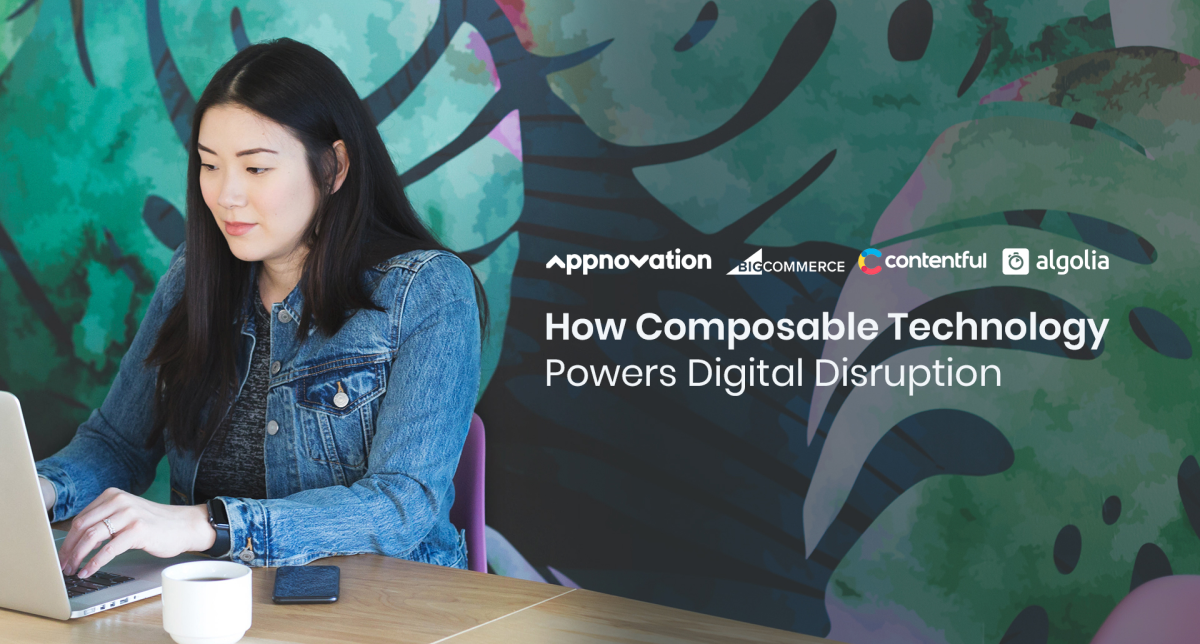How can Composable Technologies help businesses survive and scale?
At a recent event held at one of London's most significant historical landmarks, the Churchill War Rooms, we unpacked exactly this as we brought together 30 of the UK’s leading Brands and Digital Disruptors. We explored everything you need to know about developing transformational digital strategies and the breakthrough opportunities businesses are realizing by using MACH (Microservices based, API-first, Cloud-native SaaS and Headless) Technologies.
The evening was hosted alongside Algolia, BigCommerce and Contentful, all members of The MACH Alliance, which aims to future-proof enterprise technology and to propel current and future digital experiences with open and connected enterprise tech.
Our insightful panellists included Leon Shepherd, CIO & Digital Strategy Director at Ted Baker, Patrick Beyer, Head of Digital at MG Motor UK, Jim Herbert, General Manager EMEA at BigCommerce all moderated by our very own expert Daren Fitzgerald, SVP of Strategic Growth here at Appnovation who has played a pivotal role in our Composable Strategy and MACH Alliance Membership.
Ted Baker and MG Motor UK brought a wealth of knowledge to the discussion, having successfully implemented composable solutions and experienced the tangible benefits of repositioning their technology foundation to support highly flexible, agile, and headless tools.
Here is a summary of the discussion, which to keep within the Chatham house rules we have anonymized.
How do you get started with a digital transformation project when you have legacy tech in place that is hard to replace?
This is always a big challenge, the panel agreed. One panellist added “We had a 10-year-old website that we had to evolve to keep up with the market and consumer demand. If you want to take the power back and invent the future for your brand, in my opinion, you must approach how you get your technology to support you in this mission boldly. Otherwise, you’re going to potentially spend a lot of money trying to fix something that is fundamentally broken”.
“You have to start with the consumer. We started our most recent redesign project by focussing on customer insights early in the design journey. This enabled us to develop a brand new website (which was awarded for best website redesign in December last year) in just four months. We were not trying to answer everything at once, and instead focused on understanding the pain points of our customers. We used this as the guiding light for all the developments we implemented and today these ongoing customer insights are what powers an ongoing programme of continuous improvements”.
So, if we are talking Digital Disruption, how do composable and monolithic technologies compare?
“This is the big schism at the minute, isn't it? Do you do monolithic or composable? There are lots of people posting all sorts of inflammatory things on LinkedIn. And in my opinion, whenever anybody tells you there's only one true way, and it's their way, you've got to be a little bit wary”.
“Right now, what is important amidst everything that is going on, is developing customer-first experiences. And being able to change your digital products to enable better customer experiences, fast, plays a huge part in doing this successfully. If you don’t, you risk falling behind your competitors and losing customers”.
“So to launch new products and new services (because that's what everybody wants), especially as retailers, you have to be able to innovate and change fast to meet consumer demand. So that means your technology has to be able to deploy these changes fast, and that is where MACH and composable technology comes in and gives you a huge advantage”.
“With monolithic technologies, you’re not worrying about integrations, because it all works together. You’re also not worried about security and how they all interoperate because the coding has all been checked. All of this makes for a great, and fairly easy ride, right? Well maybe, but maybe not. Consider this, every three to six months somebody throws you a new roadmap telling you what's going to get deployed onto the system you’ve brought into. You have no influence on what's getting deployed, and there is potentially no relevance to your own business roadmap or priorities. Potentially this is disappointing compared to what you would like to do. In fact, the best-case scenario is all your competitors are the ones that may have already implemented these updates six months ago. Giving you little opportunity to differentiate, and very little control of your destiny”.
“So, this is where composable and MACH technologies enable you to grow. But, be careful what you wish for, because, with control of your own destiny, you have to own the integration, and you have to make sure that it all works. So, it's not something to go into blindly. It's a challenge. But I think it's the right thing for any business that's thinking about the future because nothing's future-proof, but having an architecture which supports continuous innovation, and the ability to add new products, new services and swap them out quickly, has got to be the way to go”.
In summary, composable technologies that you can plug and play can help businesses scale faster. Ultimately, customer experience always comes first, and amidst a cost-of-living crisis and recession, helping customers and building loyalty is a challenge all brands need to overcome. Today’s fast-paced and ever-changing world demands us as businesses and brands to change fast, so having systems in place that enable you to innovate and adapt to this quickly and cost-effectively, presents a huge advantage for businesses that want to get ahead.
To learn more about how you can get started on your composable journey, get in touch with us.


